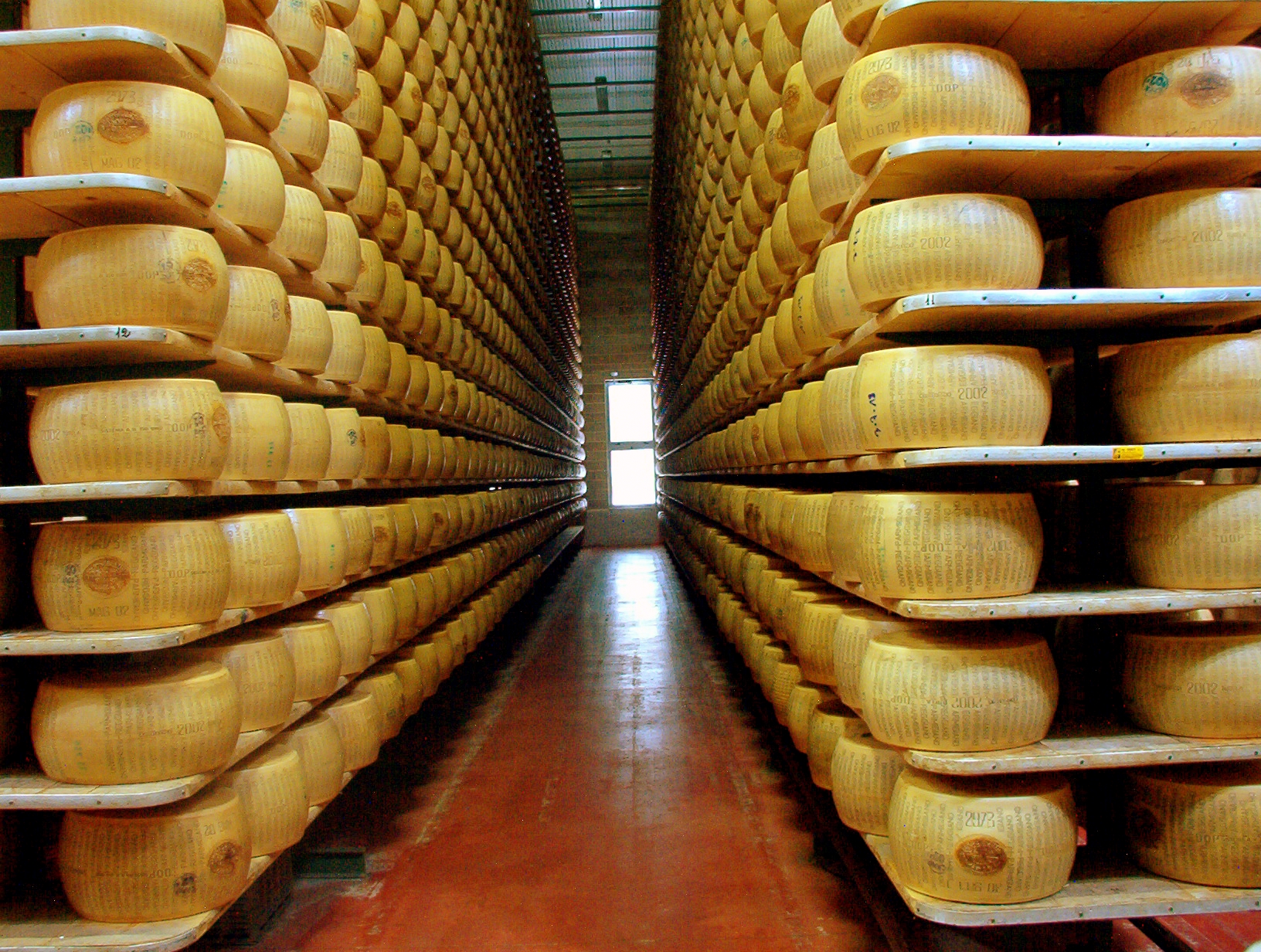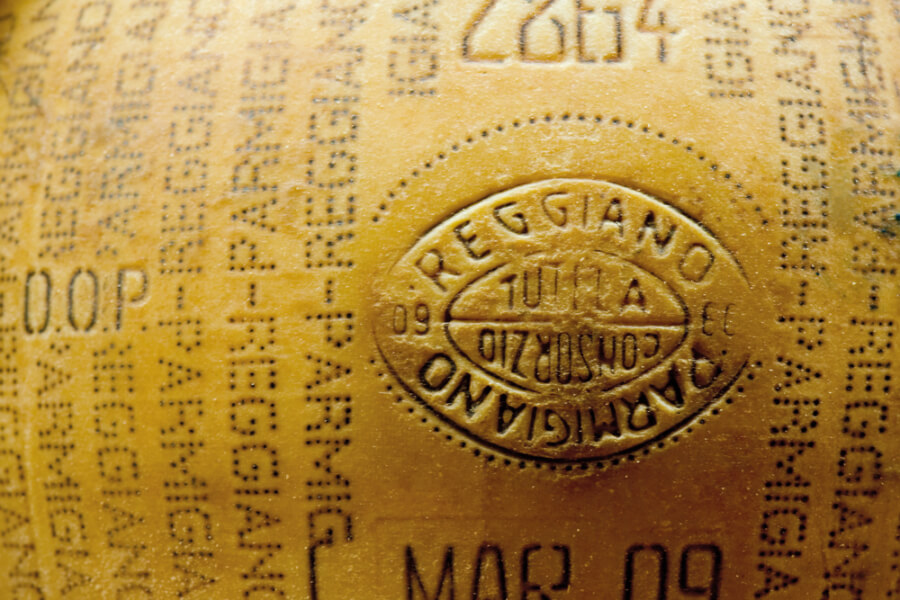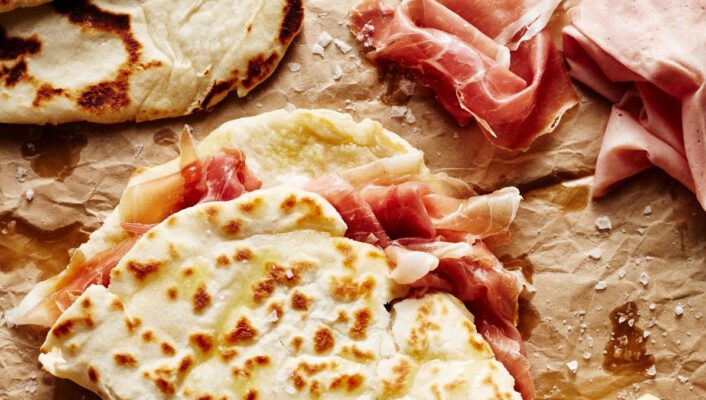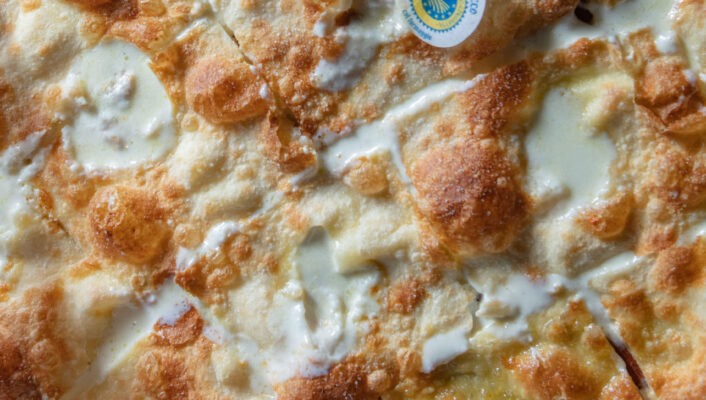You know him; you love him. He’s an Italian icon both locally and abroad, and he holds his own amongst a plethora of other competitors and impersonators. His name–Parmigiano Reggiano, the “king of Italian cheeses”. Salty, sweet, golden yellow–perfectly crumbly and excellent when grated. He is not, however, to be confused with parmesan, the English/American name to describe Italian-style hard cheeses made from cow’s milk, which can be produced in as many places as there are stores containing the frighteningly shelf-stable, pre-grated stuff.
Parmigiano Reggiano, on the other hand, must be made in a certain place, and way, to bear its name. The cheese’s Denominazione di Origine Protetta (DOP) status dictates that the whole process–milking, cheese production, maturation, and packaging–must take place in a specific area of Northern Italy. According to the Consorsio del formaggio Parmigiano Reggiano, the area includes “the provinces of Parma, Reggio Emilia, Modena, and Bologna to the left of the river Reno and Mantu to the right of the river Po.”
This makes the business of Parmigiano-making rather exclusive–and expensive. In 2019, a total of 3,754,192 wheels of Parmigiano Reggiano were produced in only 321 dairies across the region, and some wheels sold for almost €1000. Recognizable due to the deep “PARMIGIANO REGGIANO” stamps on the pale yellow rind, the massive wheels measure about 18–24 cm (7–9 in) high and 40–45 cm (16–18 in) in diameter and weigh a whopping 40 kg (86 pounds).
Given their massive size, the factories need warehouse-sized rooms for aging, with dizzyingly tall wooden shelves stretching as far as the eye can see. The wheels mature here for a minimum of 12 and average of 24 months, although the cheese can be left to mature for much, much longer, sometimes up to 30 or 48 months and beyond, following families through generations. During a quality inspection after 12 months, every wheel is tapped with a small hammer by the Consorsio, who listen for hollow sounds and other defects to check if the cheeses are up to standard and ready to be eaten.
To find out more about Italy’s VIP formaggio, I spoke to Andrea Nascimbeni, the president of the Parmigiano Reggiano factory 4 Madonne Caseificio dell’Emilia right outside Modena.

Parmigiano Reggiano
How long have you been making Parmigiano Reggiano for?
For years. I’ve been president of the 4 Madonne Caseificio dell’Emilia since 2008. When I was younger, I never doubted that I wanted to make Parmigiano Reggiano, especially since I’m very fortunate to be living in the region where the cheese is produced.
How is a wheel of Parmigiano Reggiano made?
The evening milk from the cows is left to settle in huge vats overnight. While it rests from about 8 PM to 6 AM, the milk separates and the fat rises to the top. This can be used to make cream and butter. The rest of the milk that’s left over is siphoned via a tap at the bottom of the vat and combined with the milk from the morning milking to make the Parmigiano Reggiano. Both types of milk are put together into a copper heating vat, where they are heated up gradually for about three hours. At this point, rennet is added to turn the milk into cheese. No preservatives are used; the only other ingredients added are whey and rennet, which are all produced in-house.
At around 10:30 AM, the mixture is put into linen-lined molds with a weight on top of them. Then, every two hours until about 8 PM, any liquid which has appeared is removed. By the evening, the cheese is branded with the characteristic Parmigiano Reggiano logo using a teflon strip.
The next morning, the cheeses are put into a different curved mold for two more days, which gives them their classic, rounded shape. The next day, the cheeses are submerged in a brine bath, where they stay for around 18 days. After this, they’re moved to a storeroom for a minimum of one year, where they age until they’re ready to be eaten.
How does the length of maturation affect the cheese?
Evaporation changes the taste of cheeses, affecting how salty and granular they are as well as their color. The older–and therefore dried–the cheese, the more granular. Tiny white dots become visible as the cheese ages, but only after 20 months.
How old is your oldest cheese?
We’ve still got a few cheeses from 2014. We did have a couple from 2010, but ate them at Christmas in 2021.
Do they taste any different?
Yes, they have a much stronger and more intense taste. They also smell stronger and are harder in consistency. They were really excellent! We did have older cheeses, but unfortunately lost many of them in the 2012 earthquake.
How much would you pay for a wheel of cheese?
It depends on how long the cheese has been maturing. Parmigiano Reggiano which has matured for 12 months costs around €400, one that has matured for 24 months costs about €600, and a cheese matured for 36 months comes to around €800.
What is the best way to eat Parmigiano Reggiano?
You can eat it in many ways; it just depends on how old the cheese is. If it’s matured for 12 or 13 months, it’s a perfect mid-morning or mid-afternoon snack. If it’s matured for 24 months, it’s great on top of pasta. You can also eat it alone paired with aceto balsamico, but really it depends on the person. I even have several friends who take it on bike rides as an energy boost!











